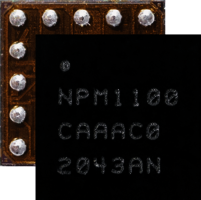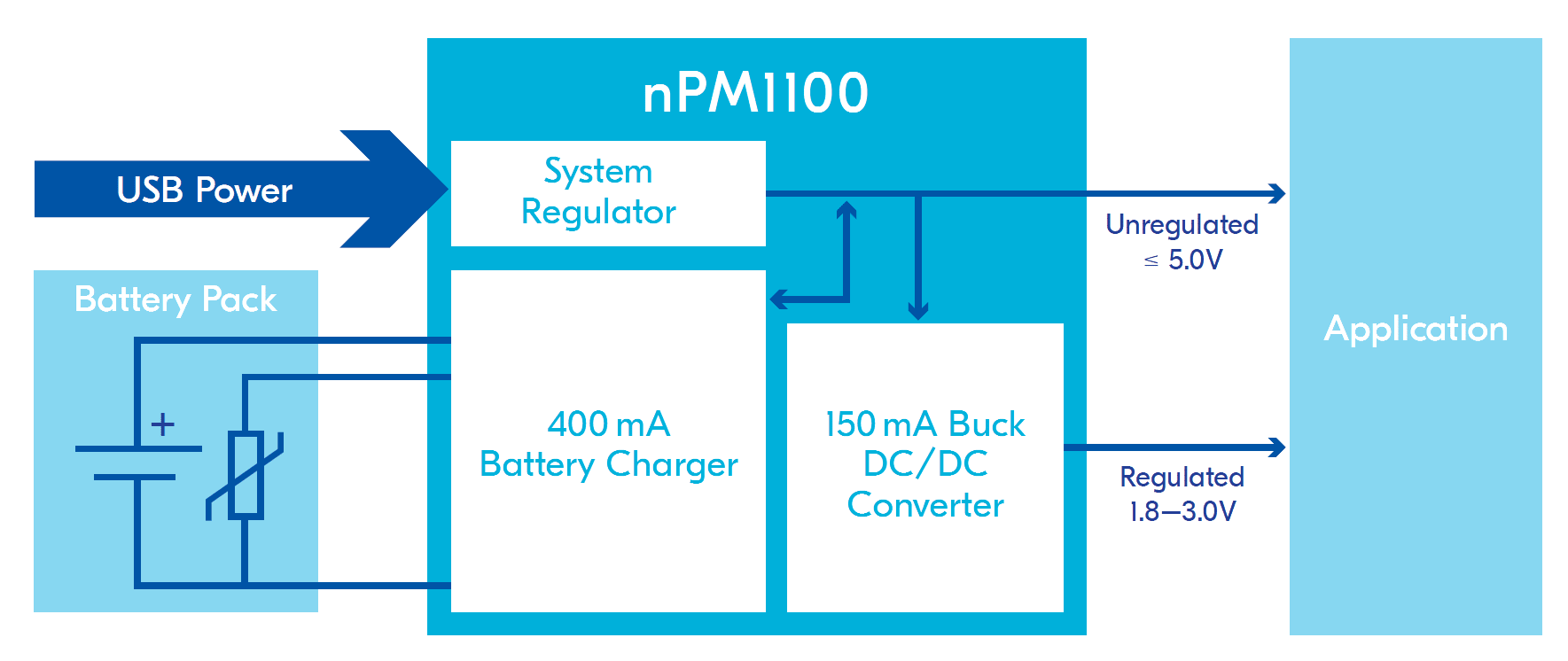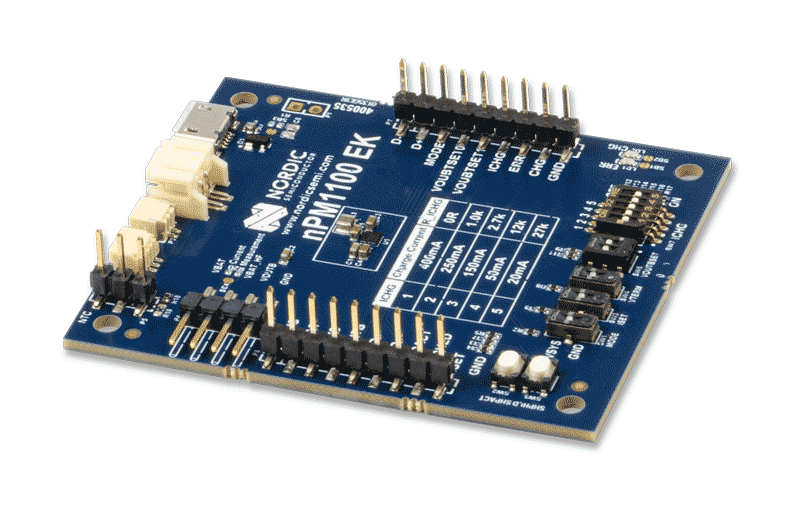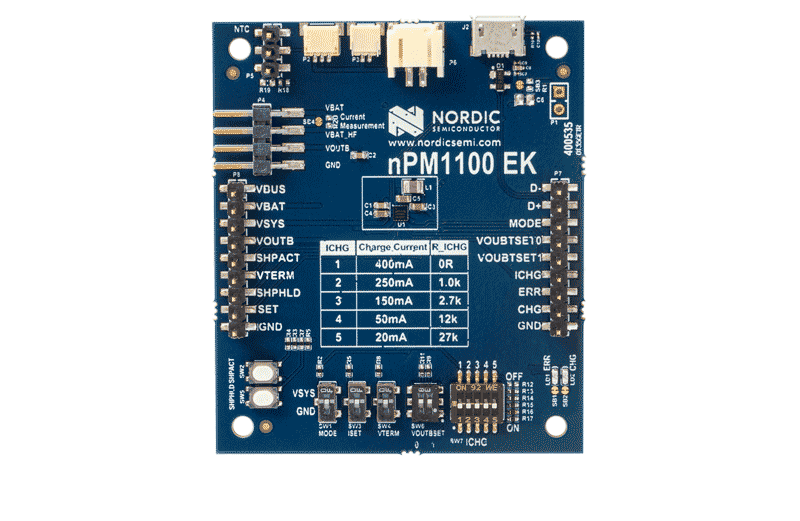Power Management IC from Nordic Semiconductor
Extremely compact single-chip PMIC (Power Management IC) solution for battery charging and power supply
The nPM1100 is a dedicated power management IC (PMIC) with dual-mode configurable buck regulator and integrated battery charger. With the dual-mode regulator the power conversion efficiency goes up to 92%. It is designed as a complementary component to Nordic’s nRF52® Series and nRF53® Series System-on-Chips (SoCs) to ensure reliable power delivery and stable operation, whilst maximizing battery life through high efficiency and low quiescent currents. It can also be used as a generic PMIC device for any other suitable application. Its extremely compact form factor makes it ideal for advanced wearables, connected medical devices, and other size constrained applications. PCB area usage can be as low as 23 mm².
The integrated battery charger is designed to charge lithium ion and lithium polymer batteries to a termination voltage selectable to 4.1 or 4.2 V supporting cell chemistries with a nominal voltage of 3.6 and 3.7 V, respectively. It includes battery thermal protection and automatic selection of three charging modes: automatic trickle, constant current and constant voltage. The maximum charge current is resistor selectable from 20mA up to 400mA. The charger also features a discharge current limitation and is JEITA compliant. The highly efficient step-down buck regulator can deliver up to 150 mA of current at a selectable output voltage of 1.8, 2.1, 2.7 or 3.0 V. It features soft startup and automatic transition between hysteretic and PWM modes. It also allows for forced PWM mode to ensure clean power operation.
Key Features
- Extremely compact, 2.075 x 2.075 mm WLCSP package
- Complements all nRF52 and nRF53 Series SoCs
- Low quiescent current, 700nA typical, 470 nA in ship mode (disables power output)
- Dual mode buck regulator with power conversion efficiency of up to 92%
- Hysteretic and PWM mode
- Selectable output voltage (1.8 V, 2.1 V, 2.7 V, 3.0 V)
- 150 mA current limit
- Battery charger for Lithium Ion/Lithium Polymer rechargeable batteries
- Automatic charging mode (trickle, constant current, constant voltage)
- Battery thermal protection
- Selectable termination voltage (4.1 V or 4.2 V)
- USB compatible input regulator
- Current limit of 100 mA or 500 mA
- 4.1 V min to 6.6 V max input voltage
- 20 V overvoltage protection
- 3.5 V to 5.0 V system voltage output
- USB port detection for SDP, CDP and DCP
- Drivers for charge and error indicator LEDs
Applications
- Wearables
- Computer peripherals
- Personal medical devices
- Smart Home sensors and controllers
- Remote controls and gaming Controllers
Start with the nPM1100 Evaluation Kit (EK)
The nPM1100 Evaluation Kit (EK) is a tool for evaluating the nPM1100 PMIC and its features in your application, without the need to create custom test hardware. The kit features DIP-switches for all selectable settings, with buttons to enter and exit ship mode. The on-board battery connectors allow for easy connection to a battery and the included USB connector enables the use of USB for power input and charging a connected battery. Headers for all pins of the nPM1100 PMIC are also available on the kit, with all functions available. The board layout and BOM is optimized for performance.
The nPM1100 EK requires no software to operate and is compatible with all components that operate within the output voltages and power the PMIC can deliver, while charging lithium ion and lithium polymer batteries. The EK operates from either USB or other DC power, or from a connected battery.
The nPM1100 EK could be used to power any nRF52® or nRF53® Series Development Kit, allowing for the use of a rechargeable battery to power the DK without the need to disconnect it for charging. By using the Power Profiler Kit 2 (PPK2) the power drawn by the system could easily be assessed through an intuitive user interface in the nRF Connect for Desktop Power Profiler app. This allows for complete control over the entire systems power consumption.
Leave Us a Message




